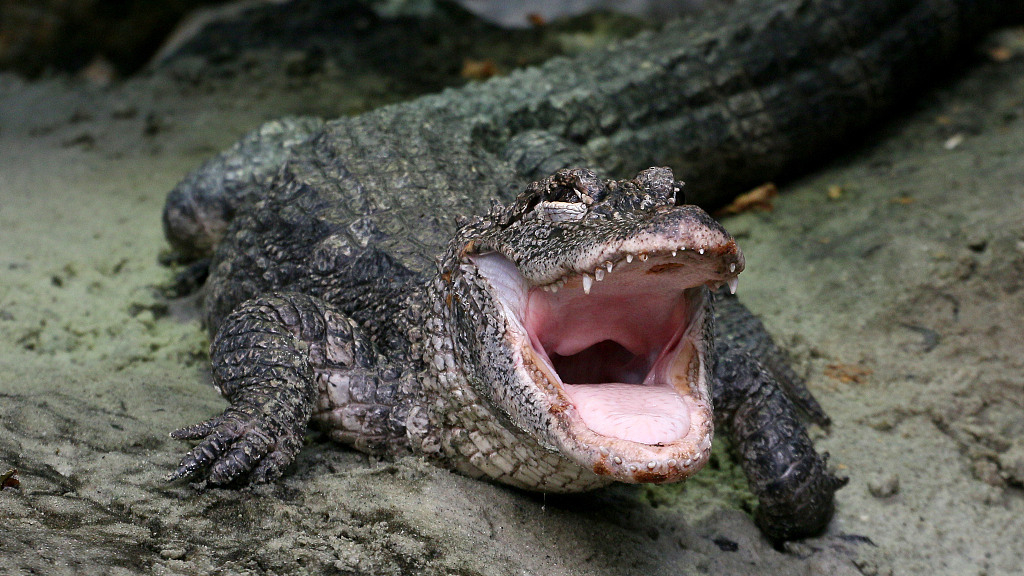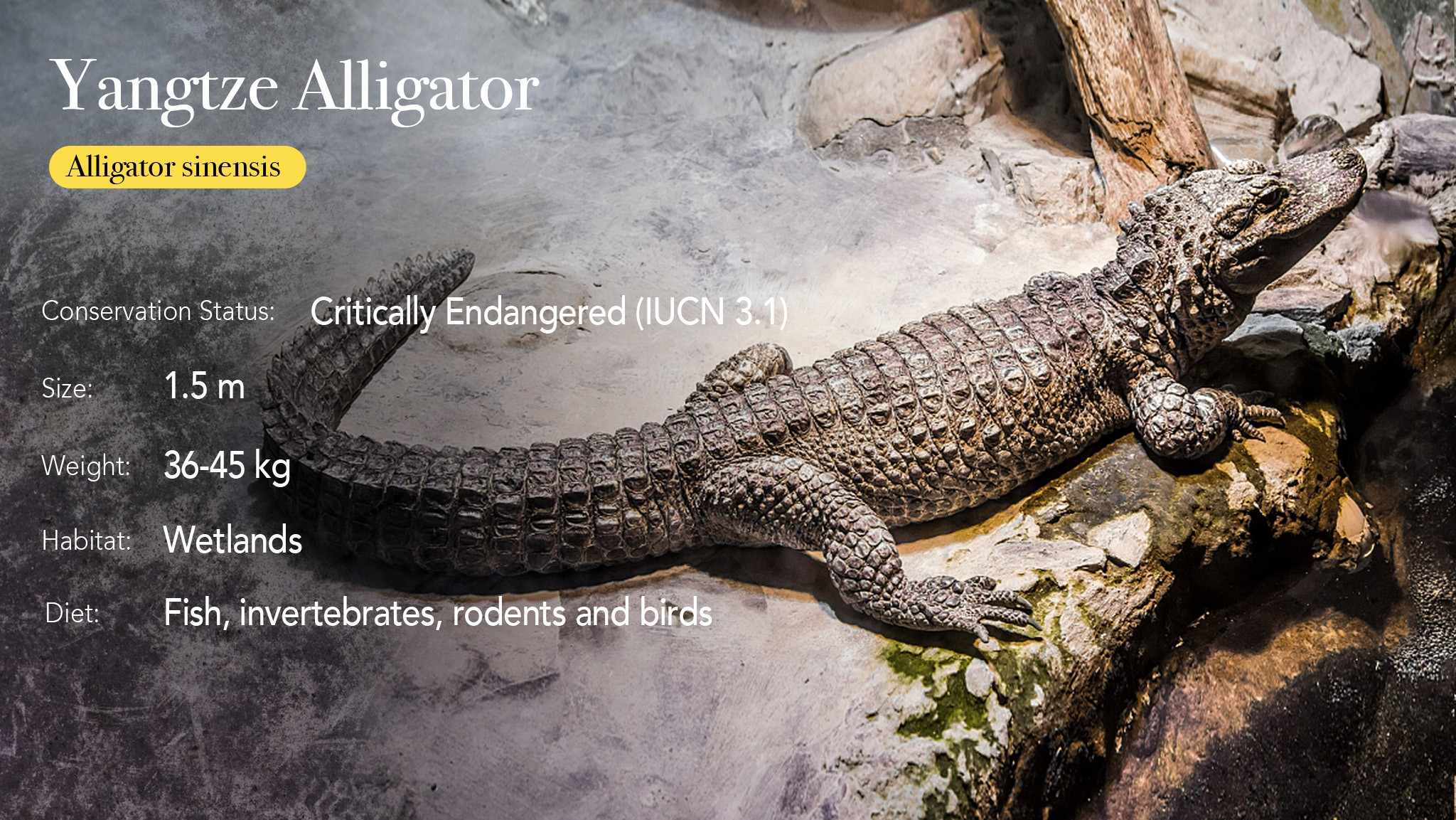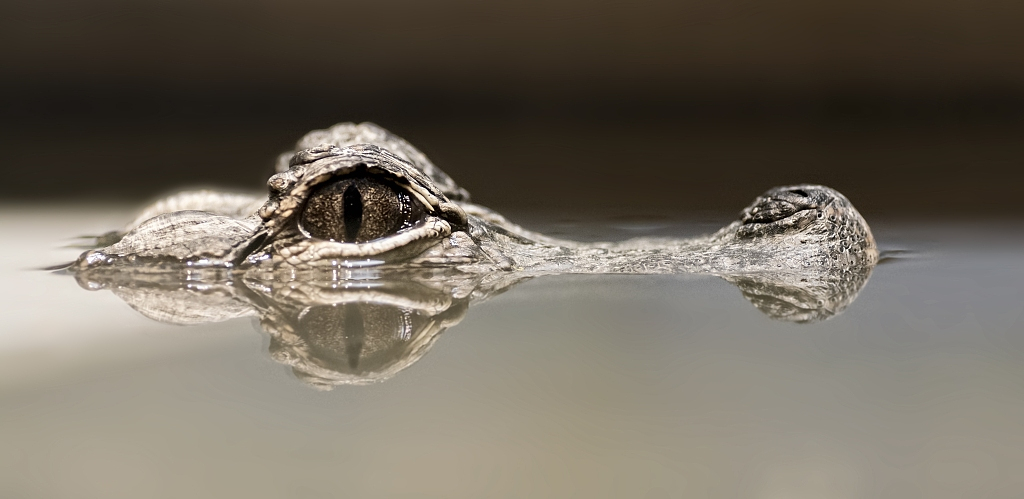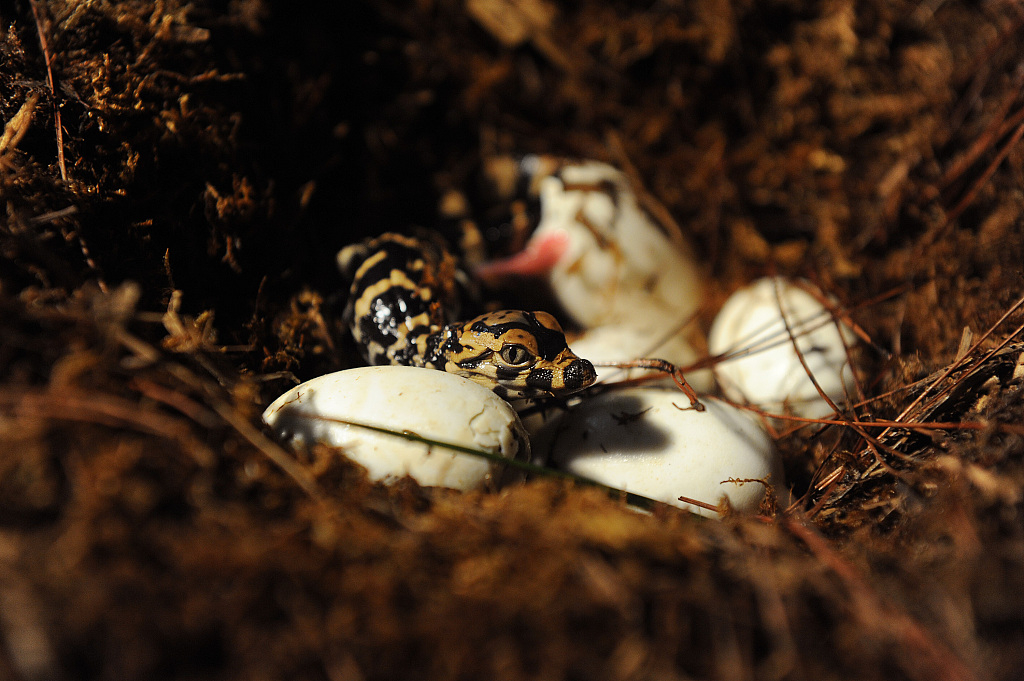

When you hesitate to click open this article, do not be fooled by the ferocity the Yangtze alligator exhibits in the cover image. What you are looking at is one of the tamest, slowest, and smallest alligators in the world.
Yangtze alligators are also known as Chinese alligators, and they are native to the rich wetlands along the mid and downstream of the Yangtze River. This ancient and fragile animal is among the rarest reptiles in the world. With a wild population of less than 200, it is listed as "critically endangered" by the IUCN Red List of Threatened Species.

General information about the Yangtze alligator. /CGTN Graphic
In east China's Anhui and Zhejiang provinces, there are around 20,000 captive Yangzte alligators. The breeding facilities have started projects to return the captive bred Yangtze alligator to the wild since 2003, however, due to multiple complicated factors, it is hard and takes time for them to survive and reprocuce in the wild.

Eye that gives you creep by reminding you of snakes and Jurassic monsters. /VCG Photo
As one of world's smallest alligators, adult Yangtze alligators are usually around 1.5 meters long and weigh between 36 to 45 kilograms. They can live up to 50 years in the wild and around 70 years in captivity.
Yangtze alligators like swamps, and they make burrows in freshwater near dams. The burrows can be as long as 25 meters. They would bring thick reeds inside the burrows to help hatching eggs. Fermented reeds and leaves would increase the temperature inside the burrows, and thus keep the eggs warm.

Baby Yangtze alligators that are just hatched. /VCG Photo
Unlike the almost completely dark adults, baby Yangtze alligators have yellow spots on them. Alligators are poikilotherm, which means their body temperature varies with the temperature of their surroundings. Therefore it is hard for mother alligators to hatch their eggs with their own body temperature.
This is when the reeds play an important part. The mother Yangtze alligator would cover her eggs with thick reeds and leaves, and when they absorb heat from the sun and fermented, the eggs could be hatched, usually around September. The mother would guard the eggs and wait for the cries of baby alligators, then dig them out from the reeds and guide them into water.

A "smiley" face. /VCG Photo
Fierce as it seems, Yangtze alligators are in fact a docile species. It is very rare for them to attack human. They feed on small water animals and whatever it can get on land. A surprising fact is that water snails make up more than 60 percent of Yangtze alligators' diet.
Read more about Yangtze alligators:
(Cover image designed by CGTN's Li Yueyun.)
(If you want to contribute and have specific expertise, please contact us at nature@cgtn.com.)

Copyright © 2018 CGTN. Beijing ICP prepared NO.16065310-3
Copyright © 2018 CGTN. Beijing ICP prepared NO.16065310-3